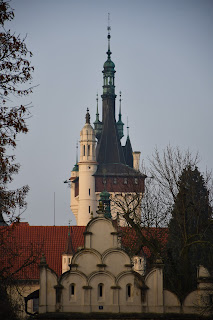From Victoria Falls to the Skeleton Coast – Day 4: Analysing excrement in the Okavango Delta
We were picked up for our trip to the Okavango Delta at half past seven in the morning and arrived at our destination – one of the mokoro stations at the NG32 Concession – some two hours later. The journey was not particularly pleasant. Our car was one of those large vehicles with open sides, and the wind chilled us down to our bones despite the blankets out driver gave us. Once we had left Maun, there were a few occasions that filled me with anxiety, like when our driver had to shift gears to pull through a particularly sandy part of the road, or when we slowed down to cross a narrow wooden bridge.
At the
mokoro station, we were met by our team of boatmen; beside Wei and me, there
was a family of three, so all together our group required three boats, locally
called makoro. A mokoro is a type of dugout canoe that is propelled by a poler
standing at the back. Traditionally, the boat was made of wood, but this
material has mostly been replaced by fibreglass, which the polers complain
makes the canoe sway more. This refrain accompanied us throughout much of the
morning, as the wind was especially strong, and the polers kept being blown
into the reeds despite their evidently strong arms and acute navigating
experience. What reassured me was that a lot of the time, the water was so
shallow that I could feel the boat scraping along the bottom, which meant that
even if we were blown over, I would have still been able to save my camera.
The
beginning of our tour was not very auspicious. We made a few stops to look at
water lilies and a few smaller wading birds like lapwings and the jacana, which
is referred to as the Jesus bird because its long legs make it look as though
it were walking on water. The only highlight within this first hour and a half
was a herd of red lechwes grazing farther away from the shore.
When we
slid up to the shore of an island, I was glad the boat was light enough to
allow us to walk directly onto dry land. After taking out our picnic cooler, we
commenced our walking tour of the area. Our boatsman-guide had the unfortunate
habit of picking up the faeces of animals and crumbling them in his hand to
demonstrate what the animal had eaten, but at least he had the good sense to do
so standing downwind from us. The first animal we saw was an elephant. It was drinking
water behind some bushes on the opposite shore, and we soon spotted the heads
and ears of several hippos sticking out of the placid water surface on its
right.
Walking
farther, we passed several massive termite mounds, but they all appeared
uninhabited. Our guides said they did not like their clients to come too close
to these empty mounds, as they are often taken over by snakes and feisty
lizards. They did not say so, however, until we had spent a few minutes
standing beside them. We also came across a little trail of light brown
termites carrying twigs and bits of grass, though we could not discern their
origin or destination. Intentionally making a downwind loop from the larger
game animals, we were able to draw closer to two herds of wildebeest. We pushed
our luck when we tried to approach a herd of lechwes, which all promptly picked
up and left.
Throughout
the journey, the guides recounted various facts about the animals we saw. Most
of them were things I had heard before, but I was amused by the several stories
the guides told – apparently unaware that they were contradicting each other –
about why the zebra is the national animal of Botswana. According to the first,
admittedly facetious account, the zebra is Botswana’s national animal “because
our president was the first African man to have a white wife.” The second story
was that the shape of a zebra’s forehead resembles a diamond, which is
Botswana’s major source of wealth. I forget the third story, but because it was
the most unremarkable one, I believe it was probably closest to the truth.
Following
our picnic, we returned to our makoro. We were luckier this time round. We came
across a large bull elephant and had to back out of the canoe trail between the
long grass to let him cross. Then, we spotted a large herd of hippos on the
opposite bank of a larger water course and kept a similarly respectful distance
from them. There were also a few other birds we had not seen before, including
a stork and an egret.






















Comments
Post a Comment